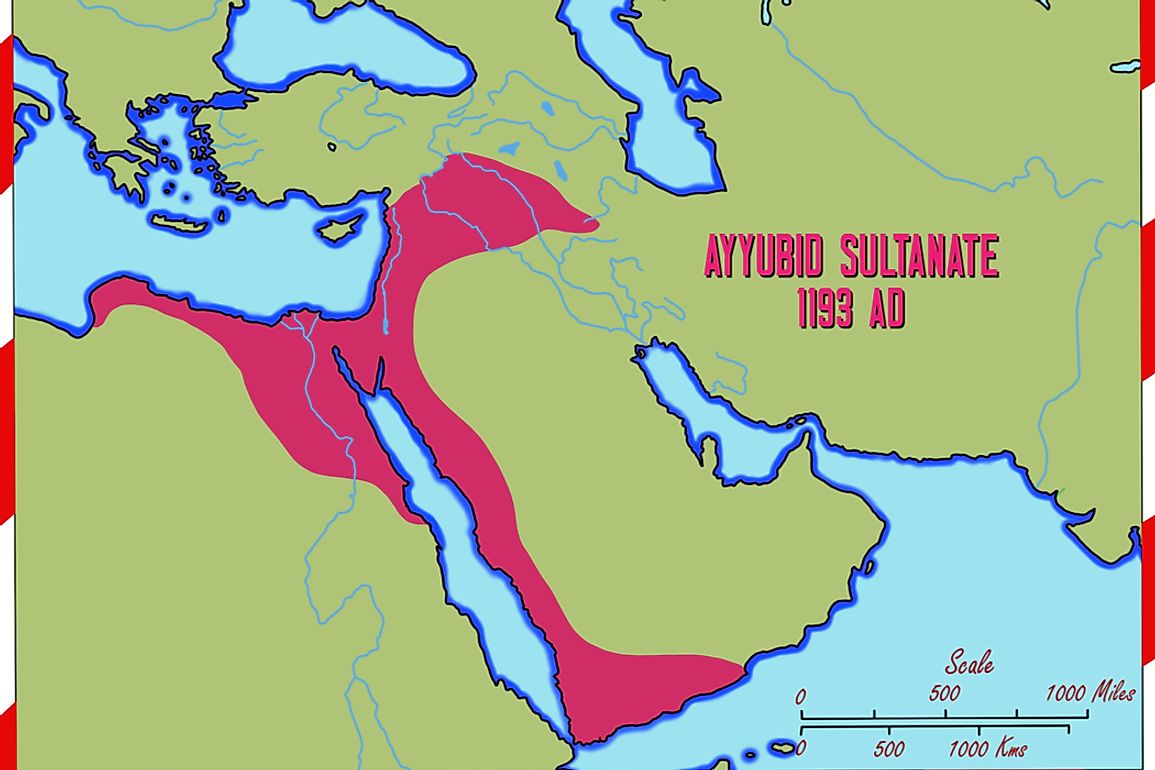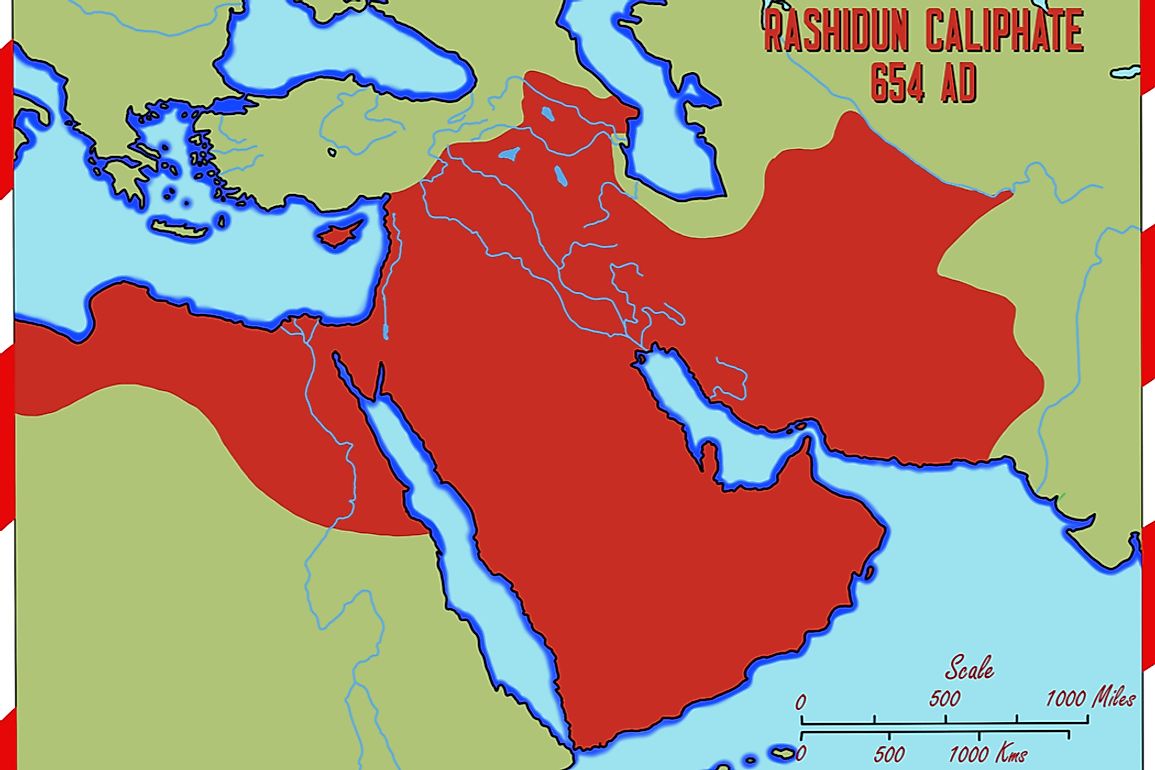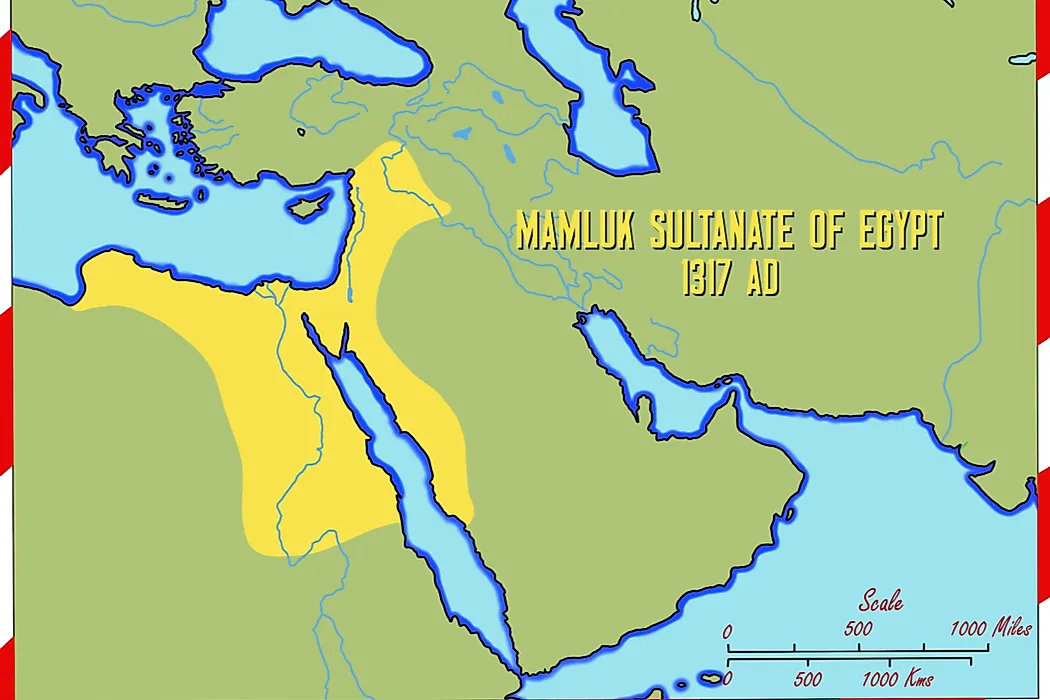Major Muslim Empires During The Middle Ages

The Middle Ages was a period that witnessed the rise of some of the greatest Muslim Empires in the Old World. During this period, there were numerous developments in science, art, cultural works, religion and economy that ensured the empires survived. Scholars from various backgrounds in the Islamic world were united with one goal of translating classical knowledge into the Arabic language and were based in the House of Wisdom in Baghdad. This scholarly knowledge was vital to the success of the empires and advancement in new ways. Below are some of the major Muslim empires during the Middle Ages.
9. Rashidun Caliphate

Rashidun Caliphate was established after the death of the Islamic Prophet Muhammad and was the first caliphate of the successive four. The Rashidun caliphate lasted from 632-661. The caliphs were successors of Muhammad and represented the highest authority of the Muslims after the death of the Prophet. The first four caliphs were directly linked to Muhammad as descendants or close friends. The caliphs conquered the entire Arabian Peninsula and much of North Africa following the idea of the holy war. The caliphs were expected to uphold high moral standards according to the Religious law. A strict body called Ansar ensured that the caliphs were in strict adherence to the religious law.
8. Umayyad Caliphate
The Umayyad caliphate was the second caliphate after Rashidun and was established as a hereditary dynasty. It was established in the second half of the seventh century and lasted from 661-750. The Umayyad’s capital was based in Damascus which was a strategic location for expansion. The Umayyad Empire stretched from Persian to the Iberian Peninsula. The continued Muslim conquest made Umayyad Empire one of the greatest in history, at one time ruling about 29 percent of the world population and covering 11 million kilometers squared of area.
7. Abbasid Caliphate
The Abbasid Caliphate came to power in the second half of the 8th century. It was the third successive caliphate after the death of Prophet Muhammad. The empire lasted between 750-1258 and continued to be ruled by caliphs for the most part of its duration. The empire’s lineage stemmed from Muhammad’s uncle and is where the dynasty’s name is derived from. The capital city of Abbasid Caliphate was Baghdad. Previous territories in the Iberian Peninsula became independent during this period when the capital was shifted to Baghdad, in what is now Iraq.
6. Fatimid Caliphate
The Fatimid caliphate was the final caliphate after the death of Prophet Muhammad. It descended from the daughter of Prophet Muhammad, called Fatimid, from whom the empire was named after. The dynasty was a political and religious set up that existed between 909-1171 and had vast control in North Africa and later in the Middle East.The caliphate’s origin was Ismaili Shia Islam which was distinct from the Sunni Islam, hence, the Fatimid caliphs had tried unsuccessfully to overthrow the Abbasid caliphs (Sunni Muslims) as the rulers of the Islamic world. The Fatimids conquered Egypt, as part of their ultimate goal of expanding their empire to the East and ousting the Abbasids. At the height of their power, the Fatimid dynasty had conquered Egypt, and Sudan, Sicily, Maghreb, Hijaz, and Levant.
5. Ghaznavid Empire
The Ghaznavid dynasty was of Turkic mamluk origin and based in Persia. The dynasty had an extensive territory from Afghanistan, Iran, Transoxiana, and northwest India. The dynasty had three languages: Persian which was the official court language and lingua franca, Arabic for theological purposes, and Turkic language used in the military. The dynasty had assimilated a huge part of the Persian culture, language, and literature despite its Turkic origin in Central Asia.
4. Ayyubid Sultanate

The Ayyubid sultanate was founded by Saladin and existed between 1171 and 1246 and was part of the Sunni Muslim dynasty. The dynasty spread across Egypt, modern day Iraq, and Syria and Yemen. Saladin and his descendants built a strong army that was capable of establishing power in Egypt and also in conquering upper Mesopotamia and the eastern region. During this period, Egypt was incorporated into the Sunni Muslim world and became a champion against the Crusaders. However, the process of integration was gradual and involved war strategies from Saladin to help conquer the Europeans. Saladin also led to the ending of Fatimid reign while instituting Sunni Islam.
3. Great Seljuk Empire, Sultanate of Rûm
The Great Seljuk Empire, Sultanate of Rûm was a result of a successful conquest of the Byzantine Empire by the Seljuks. The empire was established in Anatolia. The Seljuk became the most dominant force in Anatolia, by also the fact that they had close political and family ties with the Byzantines. The height of power by the Great Seljuk Empire was achieved when they captured key seaports of Byzantine in the Mediterranean Sea and the Black Sea. Other Turkish states in the East were also captured and this helped establish strong trade ties with the captured states east of Anatolia.
2. Mamluk Sultanate of Egypt

The Mamluk Sultanate spread across Egypt, Levant, and Hejaz and arose from the conquest of Ayyubid dynasty. The dynasty lasted from 1250 to 1380 until the Ottoman conquest. The dynasty period is divided into two. The first period lasted from 1250-1382 and the other from 1382-1517. The period between the first conquest and the Ottoman occupation is known as Bahri while the latter period is known as Burji. The ruling class was made up of Mamluks who were soldiers from Crimea. Mamluks were purchased slaves and their status was considered higher than that of ordinary slaves. The sultanate at its peak was a symbol of Medieval Egypt in terms of economy, politics, and culture.
1. Ilkhanate/Timurid Empire
The Timurid Empire comprised of modern-day countries such as Iran, Afghanistan, Turkey, Pakistan, Syria, and Turkey. Other regions such as Central Asia, Caucasus, and Mesopotamia formed part of the vast Timurid Empire. The dynasty was established by the famed warlord, Timur, who descended from the Turco-Mongol lineage. He aimed to restore the great Mongol Empire associated with the Genghis Khan, despite the fact that he did not hail from the Genghis. Eventually, much of the established empire was lost to Ag Qoyunlu, especially the Persian parts. This led to the ruling of much smaller state units called the Timurid Emirates.
Major Muslim Empires During The Middle Ages
| Rank | Name | Duration |
|---|---|---|
| 1 | Rashidun Caliphate | 632–661 |
| 2 | Umayyad Caliphate | 661–750 |
| 3 | Abbasid Caliphate | 750–1258 |
| 4 | Fatimid Caliphate | 909–1171 |
| 5 | Ghaznavid Empire | 10th c. |
| 6 | Ayyubid Sultanate | 1171–1246 |
| 7 | Great Seljuk Empire, Sultanate of Rûm | 1040–1154 |
| 8 | Mamluk Sultanate of Egypt | 1250–1380 |
| 9 | Ilkhanate/Timurid Empire | 1250s–1526 |







